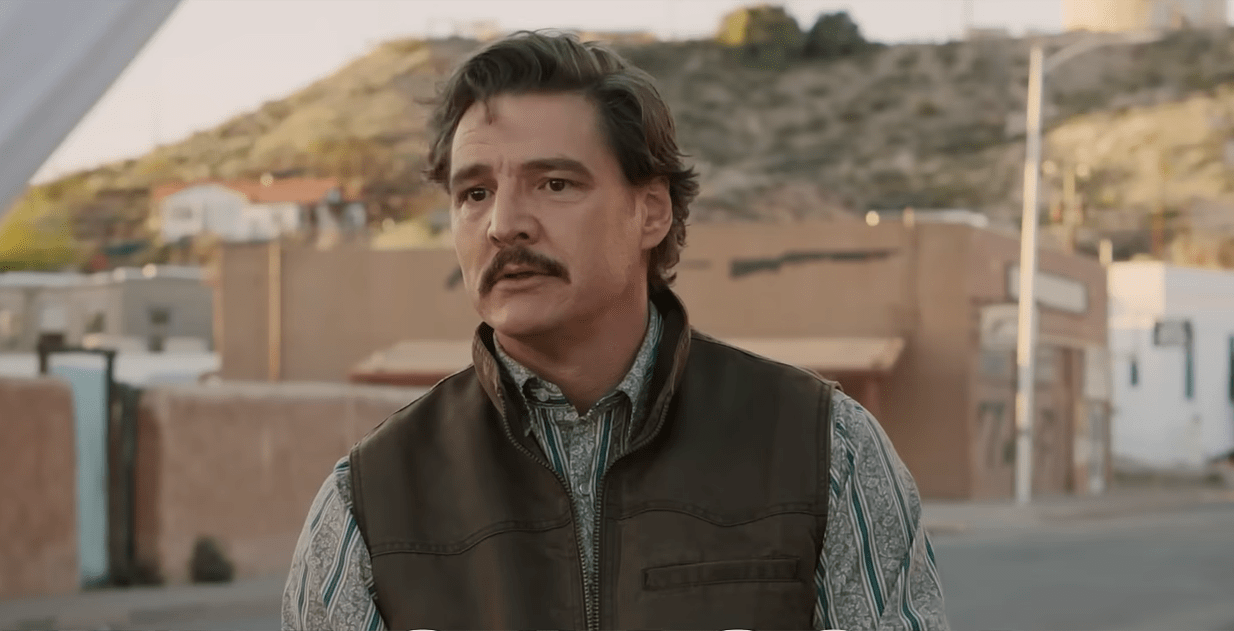While much of Ari Aster’s ‘Eddington’ is concerned with the eponymous town’s slow descent into chaos, its neighboring reservation territory, Santa Lupe Pueblo, also plays a major role in adding depth to the narrative. As this western drama movie seeks to synthesize the diverse reactions to the COVID-19 pandemic and everything else that followed in 2020, the perspective of the indigenous settlement helps stabilize the narrative and bring forth the truth behind what truly transpired. While Joe Cross sets out to redefine the town with his mayoral campaign, his competitor, the sitting mayor, Ted Garcia, hopes to usher in a new age of technology and eco-consciousness. Within this spectrum, Santa Lupe Pueblo stands in the middle, giving the entire town a reality check by turning around and charting the after-effects of their fierce clash.
Santa Lupe Pueblo is a Fictional Settlement Whose Fate Gets Intertwined With Eddington’s
Although Santa Lupe Pueblo is a fictional reservation settlement created by Ari Aster solely for the narrative of ‘Eddington,’ the setting displays a high level of realism due to the research conducted by the show’s creative team. The director reportedly visited several small towns in New Mexico to get a deeper understanding of what he wanted to convey, and the process also involved visits to several pueblos. There, Aster spoke to the people about their experiences with the COVID-19 pandemic, as well as their views on the homeland’s political climate. As such, it is possible that Santa Lupe Pueblo evolved as a composite of these diverse perspectives. Additionally, Santa Lupe Pueblo also serves as a point of contrast against Eddington, showcasing how social upheavals, such as the pandemic, affect each constituent of society differently, based on their unique sociopolitical context.

Notably, the central premise of the movie, a feud between the town mayor and the county sheriff, is a nod to a similar real-life conflict that Aster is familiar with. Based on the available information, Torrance County appears to be the most likely fit for the location that Aster referred to; however, no active pueblos are recorded within the region. This suggests that Santa Lupe Pueblo is wholly invented and may have been inspired by settlements involved in a similar set of controversies as its fictional counterpart. To that end, the filming locations of ‘Eddington’ likely contributed to the development of the narrative identity of the settlement. While the crew set camp in the cities of Truth or Consequences, Santa Fe, and Albuquerque, there does not appear to be any exact antecedent for Santa Lupe Pueblo within these locations, which merely reiterates its uniqueness as a setting.
Santa Lupe Pueblo Potentially References the Struggles of Real Indigenous Communities
One distinguishing characteristic of Santa Lupe Pueblo is its protest against the creation of a Solidgoldmagikarp Data Center. As the building is being constructed partially on native land, the residents of this fictional town quickly point to the environmental abuse that might follow, which can harmfully affect their livelihood. In real life, the Tonawanda Seneca Nation filed a lawsuit in 2025 against the creation of a massive data center right next to the reservation territory. Chief Kenith Dale Jonathan reportedly discussed the potential air and water pollution this might cause, which aligns with the talking points raised in ‘Eddington.’ However, given that the Tonawanda Seneca Nation is based in New York, and not New Mexico, the connection between the two incidents is likely coincidental in nature. Instead, Ari Aster’s focus might have been on capturing the intersection between various modern anxieties, and his social commentary also lines up with that idea.

Over the course of the movie, Santa Lupe Pueblo becomes more than just a backdrop to the chaos and gets actively involved in the storytelling and thematic structure. In particular, a police officer from the settlement, named Butterfly Jimenez, brings a fresh perspective into the pile of mysteries, and how Aster has conveyed his dynamic with the main characters of the movie is meant to be reflective of social realities. In an interview with Third Coast Review, he mentioned that the police officer has a symbolic layer attached to him, as “the movie, in a very conscious way, keeps pushing him out, in the same way America does.” To that end, the addition of a fictional indigenous settlement into the movie also enabled the creative team to shine light on how historic systemic oppression interacts with contemporary sociopolitical developments, resulting in a more thought-provoking narrative.
Read More: Is Eddington a True Story? Is Ted Garcia Based on a Real Mayor?


You must be logged in to post a comment.